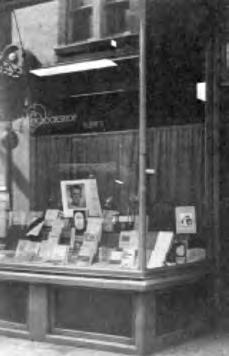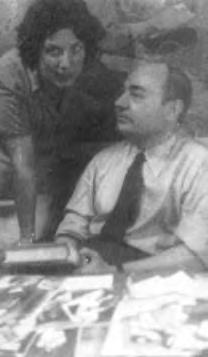
6 minute read
The Expansion in America
According to the Institut Català de les Arts del Llibre’s memoria contained in the book of minutes and agreements of the 1927 National Book Conference, the Spanish-speaking Latin American republics were a market for Spanish books until the second half of the nineteenth century. ‘They ceased to be so, to the benefit of other countries, due to more importance being given to the doctrines of the political parties than to the development of education and sources of wealth of the Spanish Fatherland’. Whatever the reason, the truth is that some of the figures available bear out this reality. Thus, in 1891 only 3% of the books in Spanish that reached Latin America came from Spain; the remaining 97% came from, in this order, the USA, France, Germany, Britain and Italy. It is no wonder then, that at the 1927 conference one participant declared, ‘the textbooks for secondary education in Latin America are French or translated into Castilian by the French’. In this context, the first publishers who probed the American adventure had to swim against the tide: Montaner y Simón, Salvat, Sopena, Maucci. During the twentieth century Gustavo Gili, Seix Barral, Labor, Bruguera, Planeta, Marcombo and Océano, among others, added their names to the list. Despite the difficulties, from the start, for some publishers, the volume of exports to America was equivalent to a high percentage of overall turnover. In 1902, for example, Maucci exported two-thirds of the books it published. In a chapter on the American market included in Bosquejo de una política del libro (1944), Gustau Gili i Roig declared that in the 1920s and 30s, the exports to America represented 39% of the books sold

Advertisement
This translation, by the nineteenthcentury novelist Juan Valera, was published by Gustavo Gili in 1940 annually in Spain. More specifically, in 1921 his own publishing firm was exporting 52% of its production to America, and in 1931, ‘another important Barcelona publisher’ (probably Salvat) was exporting 55%. And in the same period, of the total number of books exported from Spain to Latin America, 70% corresponded ‘to the Barcelona area’. But Gili put a damper on the enthusiasm that the magnitude of the American market might produce in any publishing novices. He did so by supplying figures for 1942, according to which between 35 and 40% of the population of Spanish-speaking America was illiterate, a percentage to which, he said, one had to add the non-adult part of the population in order to be able to properly measure the volume of potential customers for books in Spanish.
With hindsight, it was an expansion more of distribution than of production that took place, especially after 1970. This was hit by a terrible crisis in 1982, when the coincidence of a series of factors, headed by the simultaneous crashing of important Latin-American economies had very negative repercussions on the publishers with interests on that continent.
Catalan Publishers Outside Catalonia
Several very important ones set up business in Madrid in the nineteenth century. They evidently included Josep Gaspar i Maristany and Josep Roig i Oliveras, the founders of the Gaspar y Roig bookshop and printing press (1845-1881), one of the financially most solid businesses; it had notable success with the ‘Biblioteca Ilustrada’ collection and it was one of the first in Madrid to base the business on the publications by instalments. Next to it, the name of Manuel Rivadeneyra (1805-1872) is legendary. As a young man he travelled around Spain and Europe. In 1829 he returned to Barcelona and worked as a typographer with Josep Torner and with Bergnes de las Casas. With this experience, in 1837 he set up in Chile, a country
Other Publishers in Madrid
As well as those mentioned, a group of Catalan publishers, or from the Catalanspeaking area, moved to Madrid during the nineteenth century: Repullés, Ginesta, Fontanet, Duran, Boix,

Marés, Verges, Vila and Ayguals. Of all of them, the best known is Wenceslao Ayguals de Izco (18011873), born in Vinaròs, a printer, publisher and writer, known mainly for his romantic novels. Also from Valencia is Manuel Aguilar,
Volume of the ‘Biblioteca de Autores Españoles’ collection, an initiative of two Catalans who, trained professionally in Barcelona, had a dazzling publishing career in the capital of Spain after 1923; he is the author of some interesting memoirs (Una experiencia editorial) where he is considered to be the founder of its publishing industry. In 1846, and once more in Madrid, he began the publication of the famous ‘Biblioteca de Autores Españoles’ (BAE), which had grown to 71 volumes by 1880.
In exile in 1939, Antoni López-Llausàs (1888-1979), the cofounder, in Barcelona in the 1920s, of the Catalònia bookshop, publishing house and distribution business, took over the Sudamericana publishing house in Buenos Aires. Among other authors, this firm published Gabriel García Márquez for the first time. In Mexico City, in the 1950s, he founded Hermes, which publishes books on economics, biographies, history, fiction, art and law.

Joan Gili i Serra (1907-1998), son of the publisher Lluís Gili i Roig, founded the Dolphin Book Company and the Dolphin Bookshop in London in 1934 with the aim of increasing the interest for Hispanic culture in Great Britain. A founding member of the Anglo-Catalan Society, Gili wrote and published through his own company, which moved to Oxford during the Second World War, a Catalan Grammar (1943), a volume accompanied by translations of Unamuno, García Lorca, Juan Ramón Jiménez, Carles Riba, Josep Carner and Salvador Espriu or by an anthology of Catalan poetry. Joan Gili and his wife, Elisabeth McPherson, are the couple to whom Carles Riba dedicates the third of his Elegies de Bierville.


Before 1936, the art critic and dealer Joan Merli i Pahissa (1901-1995) had promoted a series of art magazines (La mà trencada, Les arts catalanes, Art) and a collection of books, Els Poetes d’Ara, edited by Tomàs Garcés. With this experience, and by now in exile, in Buenos Aires he founded the magazine Cabalgata (which made Julio Cortázar well known) and two publishing companies: Poseidón (1942) and Malinca (1960). The former, the most outstanding publisher of art books in Argentina for many years, eventually specialised in architecture (and published, for example, the translation into Spanish of almost all Le Corbusier’s works); the latter was known for a collection of detective novels, which included some of the most reputed authors in the genre.
Joan Grijalbo i Serres (1911-2002) was, in 1937, the Catalan government’s delegate to the Cámara del Libro de Barcelona, which determined his future as a publisher in Mexico, where he went into exile in 1939 and where he began working at
Joan Merli, in the years when he published the magazine Art

Publisher Joan Grijalbo (July 2001)
Atlante, financed by Juan Negrín. In 1949 he founded Grijalbo, which, among many other collections, published the ‘Biografías Gandesa’ (in memory of his home town), about social, economic and general knowledge topics. Over time, the absorption of other Hispano-American publishers led to it becoming the Grupo Editorial Grijalbo, with offices in many Latin American countries and in Barcelona. Grijalbo returned there in the 1960s and kept his own name, while at the same time branching out into other publishing names: Crítica, Grijalbo/Dargaud, or Junior (the last two, very prominent in the world of comics). In 1988, Joan Grijalbo sold the business to the Italian Mondadori group, with whom he had begun to associate. As recently as 1994, he founded the Serres publishing house.

Official Bodies Related to Books in the Twentieth Century
The first Cámara del Libro (Chamber of Books) was established in Barcelona on June 6th 1900 bearing the name Centro de la Propiedad Intelectual (Copyright Centre); declared an official corporation by a Royal Order of November 5th 1918, it took the name Cámara del Libro y de la Propiedad Intelectual, which by Royal Decree of February 15th 1922 became the Cámara Oficial del Libro de Barcelona. Those of Barcelona and Madrid were the only ones in existence. The former had jurisdiction in Catalonia, the Balearic Isles and the provinces of Castellón and Valencia, and the latter in the rest of the State. They were official corporations and consultative bodies of the government and, as such, affiliation was compulsory for paper manufacturers, publishers, booksellers, printers, engravers and binders. Journalists could also
Stamp of the Cámara Oficial del Libro de Barcelona prior to 1939 join them, although in a voluntary way. Apart from the associates’ quotas, the budgets of the Chambers were increased by a surcharge on the exportation of books and by two levies on paper, both state-produced and imported, the latter being the root cause of many professional disputes. After 1939, the Chamber of Barcelona, like that of Madrid, was absorbed by the Instituto Nacional del Libro Español (INLE), newly created at that time, and has now become the Càmara del Llibre de Catalunya, a body that brings together publishers, booksellers, graphic arts companies and distributors.

The Institut Català de les Arts del Llibre was born (1898) with the intention of drawing together the different sectors linked to the graphic arts. Its founders were evidently typographers, printers and publishers: E. Canibell, J. Casas Carbó, J. Cunill, F. Giró, J. Ll. Pellicer, J. Russell and A. Verdaguer. Apart from promoting the publication of monographs and memoirs, it published the Revista Gráfica (1900-1928), of great interest, founded a professional guild training school (1905) and took part in the creation of the Cámara Oficial del Libro. Like so many other bodies, the Institute disappeared forever in 1939.







